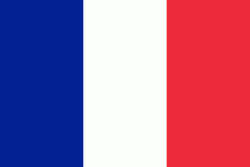Tautira
Tautira is a Polynesian beach village, valley, and point on the south-east coast of the island of Tahiti in the Pacific. It is part of the commune Taiarapu-Est. With a population of 2338 (in 2007), it is located 49 kilometres southeast of the Tahitian capital of Papeete on the coast of Tautira Bay, at the end of what is the largest valley of the Taiarapu Peninsula. Domingo de Bonechea visited the area in 1772 and attempted to spread Christianity here; James Cook landed at Tautira Bay during his voyage. Robert Louis Stevenson referred to the village as “The Garden of the World”, staying here to recover from illness in 1886. The village contains a Catholic church.
Tautira is where Catholic missionaries first landed which eventually led to the takeover of Tahiti by the French people, and which also ended Protestants hold on Tahiti: In 1773 the Spaniards established a catholic mission, of two friars, in the bay of Tautira, which was abandoned at eleven months. Earlier, in 1772, Domingo de Bonechea, the Basque captain landed at Aguilla near the Aiurua River, about 10 km from Tautira. He had left two missionaries to try convert the indigenous people to Christianity, in 1772. However, when he returned from Peru in 1775 he found that the two missionaries he had left behind on Tahiti failed to convert the natives, and eventually they preferred to return to Peru. However, de Bonechea died on Tahiti during this campaign and he is buried in the Catholic Church in Tautira, which is now named after him. James Cook had landed at Tautira Bay (or "Cooks Anchorage") during his voyage. The chiefs of Tautira were reportedly once replaced by the chiefs of Teahupo'o after conflict.
In 1886, Robert Louis Stevenson, the author of Treasure Island, The Strange Case of Dr Jekyll and Mr Hyde and other children's books, stayed here for two months to recuperate from his illness. Stevenson had moved to the village from Papeete and lived in a hut called the "bird-cage house" where the beautiful Princess Moe, an old lady of royalty, tended him back to good health, bringing him dishes of raw fish in coconut milk, lime juice, sea water and chilli. The local chief, Ori O Ori, befriended him and kept him in his house, and they had even exchanged names as “Rui” and “Terii-Tera”. It was during his stay here that Stevenson wrote to his friends calling Tautira as “The Garden of the World”. In 1915, Tautira was described as being "the second town of the island".
Tautira is where Catholic missionaries first landed which eventually led to the takeover of Tahiti by the French people, and which also ended Protestants hold on Tahiti: In 1773 the Spaniards established a catholic mission, of two friars, in the bay of Tautira, which was abandoned at eleven months. Earlier, in 1772, Domingo de Bonechea, the Basque captain landed at Aguilla near the Aiurua River, about 10 km from Tautira. He had left two missionaries to try convert the indigenous people to Christianity, in 1772. However, when he returned from Peru in 1775 he found that the two missionaries he had left behind on Tahiti failed to convert the natives, and eventually they preferred to return to Peru. However, de Bonechea died on Tahiti during this campaign and he is buried in the Catholic Church in Tautira, which is now named after him. James Cook had landed at Tautira Bay (or "Cooks Anchorage") during his voyage. The chiefs of Tautira were reportedly once replaced by the chiefs of Teahupo'o after conflict.
In 1886, Robert Louis Stevenson, the author of Treasure Island, The Strange Case of Dr Jekyll and Mr Hyde and other children's books, stayed here for two months to recuperate from his illness. Stevenson had moved to the village from Papeete and lived in a hut called the "bird-cage house" where the beautiful Princess Moe, an old lady of royalty, tended him back to good health, bringing him dishes of raw fish in coconut milk, lime juice, sea water and chilli. The local chief, Ori O Ori, befriended him and kept him in his house, and they had even exchanged names as “Rui” and “Terii-Tera”. It was during his stay here that Stevenson wrote to his friends calling Tautira as “The Garden of the World”. In 1915, Tautira was described as being "the second town of the island".
Map - Tautira
Map
Country - French_Polynesia
 |
 |
French Polynesia is divided into five groups of islands:
Currency / Language
| ISO | Currency | Symbol | Significant figures |
|---|---|---|---|
| XPF | CFP franc | â‚£ | 0 |
| ISO | Language |
|---|---|
| FR | French language |
| TY | Tahitian language |















